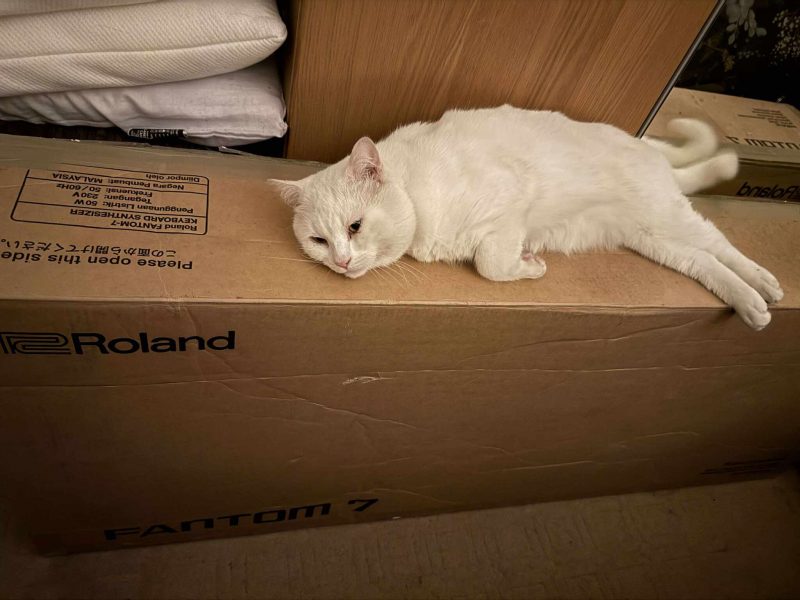
A stray cat looked after by regular reader Duncan Cook, “chillaxing on a boxed Roland Fantom 7 🎹😻”
We at CatSynth appreciate when folks take care of stray cats. After all, our own Big Merp was once such a stray.


The Open Hand Monument at the Capitol Complex in Chandigarh, India.
For more images from this amazing brutalist complex, as well as others from India, please check out our Instagram.
Ringer creates a soundscape with the Waldorf Blofeld. Submitted by our good friend Damien Olsen.
We also see a Line 6 delay pedal, Korg M50 and TR61 keyboard synthesizers, a Roland SP-404 SX sampler, and more.
This is the sweetest thing! The lovely Bella creates a drone on the Montage M7 while she relaxes. Her drone is a musical contribution to a larger composition and performance. From our friends I Love Cats and Synths on YouTube.
My best guess on the keyboard model is a Yamaha PSR, but if you know, please let us know in the comments below.